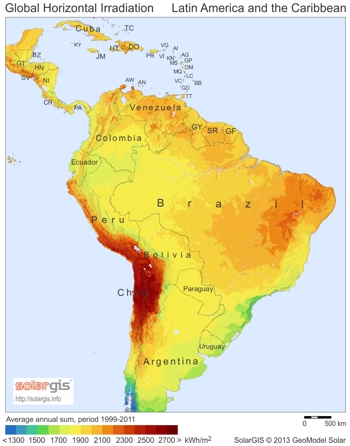Photovoltaic technology represents
less than 1% of the global electricity production
today. However, its growth rate has been and
continues to be remarkable especially in Europe (mainly
Germany, Spain and Italy), where it has been the
leading technology in terms of new installed
capacity over the past 2 years. According to
industry analysts, photovoltaic installed capacity
in the world will double by 2016. Moreover, the
electricity production cost of solar technologies is
for the first time lower than conventional
industrial technologies in some countries such as
Germany.
When solar panels first came to the market in the
1970s they sold for more than $70 a watt in 2012
prices. Today they cost less than 80 cents a watt,
with prices plummeting by 80 per cent in the past
five years alone. Technological advances and
drastic price reductions now make the photovoltaic
option more affordable for families and businesses.
The impact of allowing people to generate their own
electricity is far reaching and has the potential to
change the way we live. Electricity consumption
could switch from the centralised electricity model
that prevails today into a decentralised and self-generating
industry accessible to all, inclusive of distant
rural areas.
 The
electricity mix in Colombia
The
electricity mix in Colombia
In Colombia about 95% of electricity is generated by
hydroelectric projects and conventional thermal
sources (mainly gas fuelled). Non-conventional
renewable sources like solar, wind and biomass have
barely been considered making up only about 1-3% of
total production. Nonetheless, the country has
enormous potential thanks to its geographical
position which provides for large solar irradiation
volumes and winds.
Electricity demand is growing at a rate of
approximately 4% per year and is largely correlated
with GDP trends. By sector type, residential,
industrial and commercial users take 42%, 32% and
18% of total consumption respectively.
With daily average solar irradiation in Colombia
ranging between 4,5 and 6,0 Kwh/day/m2, equal to
annual averages of 1.500-2.200 Kwh/year/m2, the
country has enormous potential for the use of solar
energy. Additionally, solar panels continue to
evolve so rapidly that they do not need direct sun
light to produce electricity. That means even on a
cloudy day, solar modules can produce electricity
from solar energy.
Source: SolarGIS © 2013
GeoModel Solar